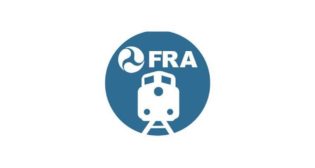
Lac-Mégantic verdict: Not guilty
Written by David Thomas, Canadian Contributing EditorA jury of 12 Quebec citizens, after several days of deliberations that came very close to impasse, declined Jan. 19 to accept prosecutors’ contention that three Montreal, Maine & Atlantic employees were criminally responsible for the July 2013 runaway oil train calamity in the lakeside resort town of Lac-Mégantic that claimed 47 lives and destroyed the historic town’s downtown core.
The jury’s not guilty verdict means that no person, corporation or government agency will be held criminally negligent for the tragedy, at least not for the foreseeable future.
MM&A locomotive engineer Tom Harding, dispatcher Richard Labrie and operations manager Jean Demaître of the now-defunct Class II railroad were charged with criminal negligence in 2014 by Quebec police. During trial proceedings, but with jurors excluded from the courtroom, Quebec Superior Court Justice Gaétan Dumas had scolded prosecutors over the substance of their case against the three men, who controlled neither the railway’s operational and safety policies nor government regulation. Independently, the jurors agreed.
The case against engineer Harding was more understandable since he had control of the train before it was parked and left unattended on a steep downhill grade without derailers or other physical protection beyond what was prescribed.
Harding was accused of criminal negligence causing death by failing to set an insufficient number of handbrakes before leaving the train, with its lead locomotive running to maintain brake pipe pressure in the consist. The flaring of fire from the locomotive’s exhaust stack caused local firemen to shut down the diesel engine, resulting in the loss of brake pipe air pressure and the subsequent eight-mile runaway that culminated in a 65-mph derailment and chain reaction explosions at the very center of town.
Harding was unaware that the train’s cargo of Bakken light crude oil destined for the Irving Oil refinery in New Brunswick had been incorrectly classified by its U.S. shipper but was in fact highly explosive, not just flammable. Nor did he make the rules that allowed one-person operation of a 73-car train of hazardous materials over a railroad the Transportion Safety Board of Canada (TSB, the Canadian equivalent of the NTSB) cited as having a weak safety culture. The jury also appears to have agreed with TSB’s opinion that Transport Canada, the Federal Railroad Administration’s Canadian counterpart, had failed to provide adequate safety oversight of the railroad as well as the hazmat it was transporting.
When the TSB released its report in 2013 on the causes of the catastrophe, the board’s leadership made it plain that a key culprit was Transport Canada and its lax regulatory oversight of the MM&A:
“This was a company with a weak safety culture, a company where people did what was needed to get the job done, rather than always follow the rules,” TSB Chairperson Wendy Tadros said. “A company where unsafe conditions and unsafe practices were allowed to continue. Which begs questions: Who, then, was in a position to check on this company—to make sure safety standards were being met? Who was the guardian of public safety? That’s the role of government—to provide checks and balances. Oversight. And yet this booming industry—where unit trains were shipping more and more oil across Canada, and across the border—ran largely un-checked. Yes, Transport Canada knew about some of the problems at MM&A, but the follow-up wasn’t always there.”
“If the guard dog doesn’t do its job, then indeed it is to blame,” said TSB Chief Operating Officer Jean Laporte when asked to say directly whether Transport Canada held major responsibility for the disaster.
Courtroom spectator Jean Clusiault, who lost his daughter Kathy in the explosion, praised the verdict, according to the Canadian Broadcasting Corporation. Clusiault even hugged the acquitted Labrie. “I felt relieved because these are not the right people who should be there,” he said. “These are human beings with families who worked hard all their lives. We treated them like killers.”
Railway Age Contributing Editor Jim Blaze, who closely followed the case for his lecture documentation of railway accidents, and uses such case histories to teach some of his students, comments:
“The tragedy began after Harding had parked the train in the village of Nantes and then left as ‘off duty’ for the night. That was part of company train operations practice. That practice pattern and corporate culture was noted by the defense in its presentations to the jury, which must have paid attention.
“After the engineer left the train, a fire broke out in the locomotive [that had been left running to maintain air in the train’s brake pipe]. Firefighters arrived and then extinguished the flames—but then turned off the locomotive’s diesel engine. That action cut off part of the train’s air brake system, something that the now-away-from-the-scene engineer did not know.
About an hour later, the train lost its remaining effective brake holding capability, and it began a long downhill roll into the center of Lac-Mégantic. There, the train loaded with crude oil derailed— and for a variety of complex and unexpected reasons the leaking tank cars erupted into a huge blaze.
“Harding admitted that he had that night only applied seven handbrakes on the parked train and did not fully test them before leaving the train. The prosecution argued more handbrakes would have stopped the train from moving. The defense argued that Harding was following what management trained him to do, and that this was a common practice at this location.
“When he learned of the disaster, Harding went to the town to help emergency responders detach the remaining tank cars from the train to prevent further explosions.
“Criminal intent? The jury concluded that was not the circumstance.
“Who does bear much of the responsibility, if not the three men on trial? The jury did not decide that.
“Left open is the conclusion from the Transportation Safety Board of Canada, which identified 18 related causes, among them a poor corporate training and management safety culture. The jury never read or heard about this report.
“The three men on trial? They were not the root cause. Were they the easiest of targets to blame? Maybe. Maybe not.
“Someone needs to dissect what the 12 Canadian jurists discovered over those nine days. Who is going to do that?
“Justice took a really long time to find, at a cost to the families of those accused. And the decision by a jury of peers brought no resolution to the families of the dead.”
Railway Age Editor-in-Chief William C. Vantuono contributed to this story.



